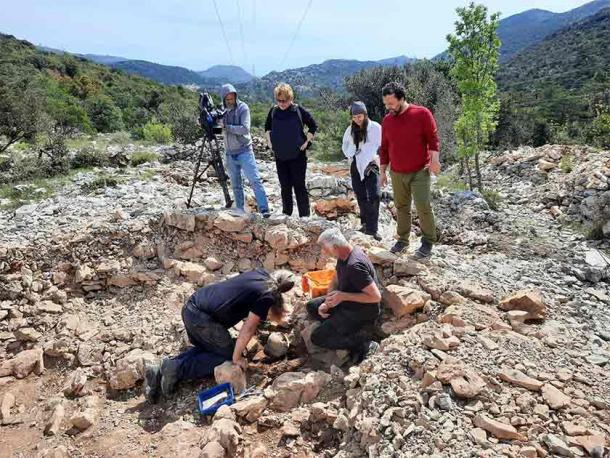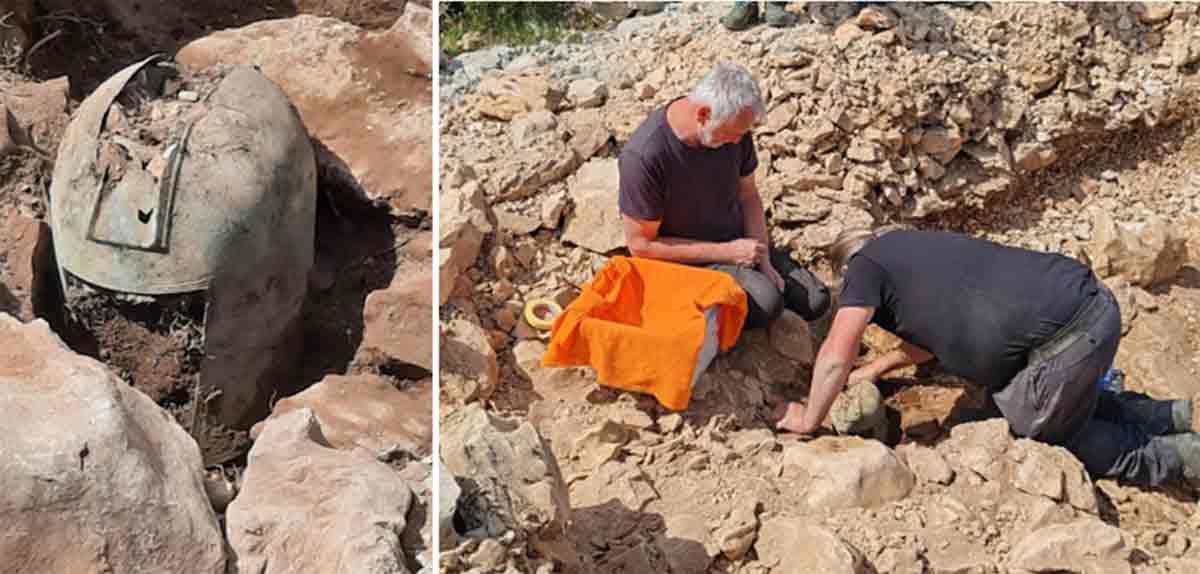2,500-Year-Old Greek-Illyrian Helmet Discovered in Croatia
Archaeologists in Croatia have recently made a significant discovery on the Pelješac Peninsula, unearthing a Greek-Illyrian helmet that dates back to the 6th century BC. This find is the second such helmet to be found at the Gomile archaeological site near the village of Zakotorac, and offers further insights into the martial and ritualistic practices of ancient communities along the eastern Adriatic coast.
Link to Ancient Warrior Culture
The helmet was found in a masonry annex next to burial mounds at the site, reports Dubrovnik Museum of Archaeology, and is believed to have been a votive offering. As such, the artifact reflects the martial prowess of the ancient Illyrians, and also indicates complex societal structures and spiritual beliefs.
The presence of grave goods, such as iron weaponry found alongside the first helmet, suggests that these items belonged to members of the warrior elite, underlining their status within their communities.

The newly found Greek-Illyrian helmet in Croatia. (Dubrovnik Museums)
Collaborative Efforts Yield Historic Discoveries
This excavation is a joint endeavor by Dubrovnik Museums, the City Museum in Korčula, and the Dolenjski Museum, and has been active since 2020. Under the guidance of Dr. Domagoj Perkić from the Archaeological Museum in Dubrovnik, the team—including experts from the University of Zagreb and the Academy of Arts in Split—has meticulously unearthed artifacts from several burial mounds that shed light on the life and times of the area's ancient inhabitants.
- Archaeologists Discover a Long-lost Illyrian City ‘Mistaken for Natural Rocks’ in Albania
- Historians’ Gender Bias Accounts Of Illyrian Queen Teute’s Roman Encounter

Archaeologists from Dubrovnik Museum excavating the helmet. (Dubrovnik Museums)
A Trove of Ancient Treasures
In addition to the helmets, the excavation team has uncovered a rich array of grave goods. These include 15 bronze and silver fibulae, spiral bronze jewelry, bronze tweezers, needles, and hundreds of glass and amber beads. A bronze diadem and over thirty vessels of Greek style—many produced in renowned workshops from Attica and Italy—further attest to the extensive cultural and trade networks of the time, noted Archaeology Magazine in its coverage of the find.
These findings are not only significant for their historical value but also for their implications regarding the interactions between the Greek and Illyrian civilizations. They suggest a level of sophistication and mutual influence that is crucial for understanding the dynamics of ancient European societies.
The discovery of the Greek-Illyrian helmet near Zakotorac is a reminder of the rich history that lies hidden beneath the surface of the Croatian landscape. As excavations continue, each artifact brings us closer to piecing together the complex puzzle of Europe's ancient past.
Top image: left; the recently excavated Greek-Illyrian helmet, Right; archaeologists extracting the helmet at the site. Source: Dubrovnik Museums
By Gary Manners

















